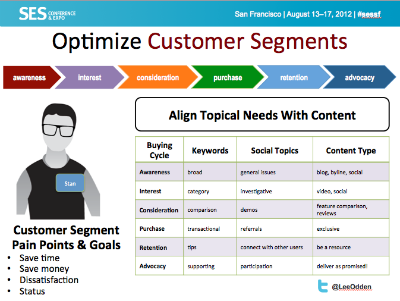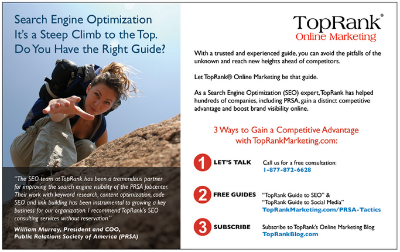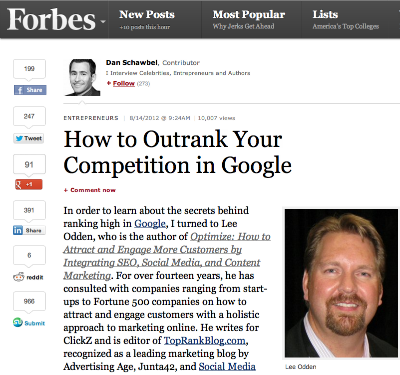 The role of media in helping brands become more relevant online has entered a time where words like “convergence” and “integration” best describe the multiple channels, approach, and skill sets necessary to succeed.
The role of media in helping brands become more relevant online has entered a time where words like “convergence” and “integration” best describe the multiple channels, approach, and skill sets necessary to succeed.
The days of single device access to the Internet have given way to a range of connected devices including tablets, smartphones, and even cars and kitchen appliances. Ubiquitous connectivity plus the ease of publishing and interaction by both organizations and individuals can mean huge opportunity. Companies that optimize their integrated media strategies and tactics to develop and scale digital media content wherever customers are looking and interacting can achieve a substantial competitive advantage.
Optimizing a 360-degree experience for customers is going to require more from us as online marketers. As Avinash Kaushik has said on this blog, “You can no longer be good at just one thing, or two. It is a 10-thing world now (and maybe a 20-thing world soon).” Multi-channel, multi-media, and multi-skilled are the baseline expectations for competitive marketing with digital media.
Taking advantage of a more integrated media mix starts with a clear understanding of what these media labels mean along with a few examples:
Earned Media
Earned media is often the result of public and media relations efforts to “earn” coverage in industry publications, both on- and offline. In other words, it’s achieving editorial brand presence within media without having to advertise. Although it’s entirely possible and common that a brand would advertise in the same digital publication where they’ve earned coverage.
Examples would be a prominent mention in an article in a magazine, newspaper, or industry website like Fast Company, The New York Times, or this nice piece of recent coverage we had in Forbes with over 10,000 views that talks about the role of SEO through through the lens of the customer journey, stressing the importance of content.
Owned Media

Owned media is about brand control and includes digital media, content, and assets such as websites, blogs, newsletters, white papers, presentations and social media accounts. Brands are increasingly behaving like publishers with editorial staff managing content creation teams. “Content marketing” is the hot topic when it comes to owned media and can facilitate brand information discovery through search and social channels. Content engages customers and fosters relationships throughout the customer lifecycle. Well-implemented owned media provides an opportunity for the brand to provide consumers an earned media experience while maintaining control over editorial.
American Express OPEN Forum and General Mills’ Tablespoon.com are great examples of owned media. TopRank has numerous examples of owned media ranging from this blog to the book Optimize to presentations like the one above that further emphasizes the role of optimization in guiding the customer along the sales cycle and choosing topics and content formats.
Paid Media

Paid media is advertising and examples include display ads, pay-per-click search ads, and sponsorships. The pro for paid media is near on-demand implementation, some degree of control, and scale. The growing popularity of social advertising on social media sites like Facebook, Twitter, LinkedIn, and YouTube adds another option for marketers to gain presence in channels where consumers and buyers are spending a lot of their time. The appearance of brand messages and content within paid media can work together with social sharing and organic search.
From ads on the right side of Google.com to the awesome sponsors of Online Marketing Blog to the right of this post, paid media examples are pretty abundant. TopRank does not engage in any advertising with one exception: part of our consulting agreement with the PRSA is to receive an ad in their print magazine PRSA Tactics, which emphasizes our search expertise and offers links to guides on social media and SEO.
Shared Media

Shared media is about the co-creation of content and media between brands and community. Brand social web participation and interaction with consumers on sites like Facebook, Twitter, and YouTube that results in content is “shared media” since it’s a result of a shared interaction. Because of the nature of social sharing and engagement on social media sites, shared media can propagate across an individual’s network to others, and so on and so on. Paid and owned media can inspire shared media and shared media can inspire earned media.
One of my favorite examples of co-created or shared media is Dell’s IdeaStorm community and of course the e-book project we’re working on at TopRank in conjunction with the speakers at Content Marketing World shown above.
Virtually all online marketing involves social media to one degree or another. The convergence of media and the need to integrate media types and channels in order to create and optimize a 360-degree experience that is meaningful and social is essential for optimizing the connection between relevant audiences and brand content.
That perspective is what has lead to TopRank‘s development of Optimize 360 and a 3 dimensional approach towards optimization: Attract, Engage, Convert. Each presents an opportunity for performance optimization and connecting brand content with consumers to create meaningful experiences and mutual benefits. Over the next few months you’ll start to see more tightly integrated media in all formats from TopRank and we’ll share that evolution here and in upcoming presentations. We take our own medicine when it comes to online marketing and that transparency has resulted in new engagements with some pretty incredible companies.
Engaging consumers where they live online and in ways that they care about represents the path to helping brands become more relevant where it matters online. A holistic approach to media and what you do to optimize that media to attract, engage, and convert prospects to buyers and buyers to evangelists is more of a perfect storm than an apocalypse. The question is, are you ready to adapt and evolve to meet the challenge?
The original version of this article first appeared in my Social Media Smarts column on ClickZ.



